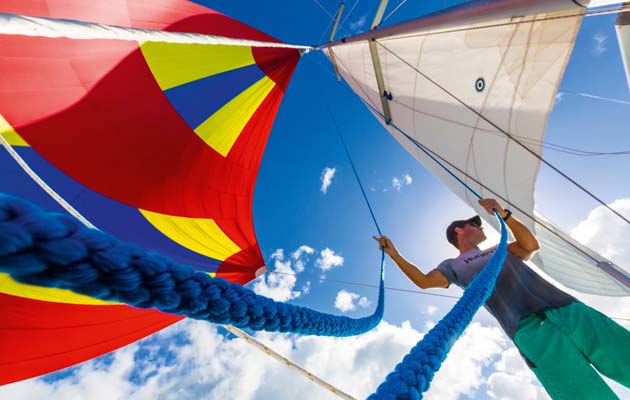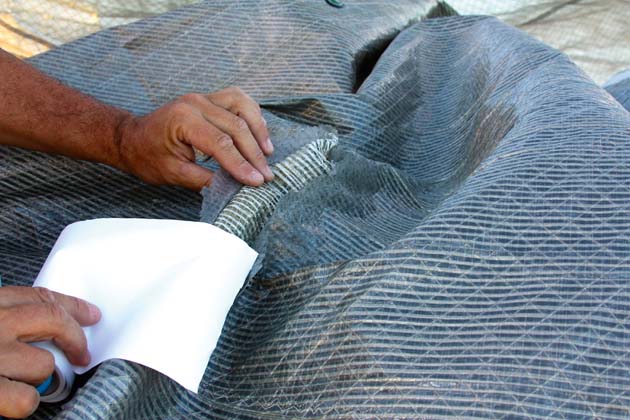Avoiding chafe
Chafe can be a major problem on a long passage. When poling out the spinnaker, make sure it is firmly fixed in place with a foreguy and an afterguy – we show this in our Bluewater Sailing Techniques series video and on our YouTube channel – and check for chafe in daily deck and rigging checks.
Many skippers add leather protection on the spinnaker sheets and sometimes also the genoa sheets where they go through the jaw of the pole.
Places to look for wear are where sails may be rubbing against standing rigging or even against other sails. When having your sails built or refurbished, it is well worth adding extra chafe patches and rows of stitching where the sail might rub against standing rigging and, when running downwind, try to get twist out of the mainsail to reduce any potential chafing movement.
To avoid halyard chafe – a quite common cause of the spinnaker going overboard and getting damaged – check that sheaves, sheave boxes and exits are all in good condition and are free-running. It is also a good idea to have the spinnaker halyard leading from the sheave to an articulating swivel block and a swivel shackle at the end of the halyard.
This is an extract from a feature in the August 2015 issue of Yachting World





